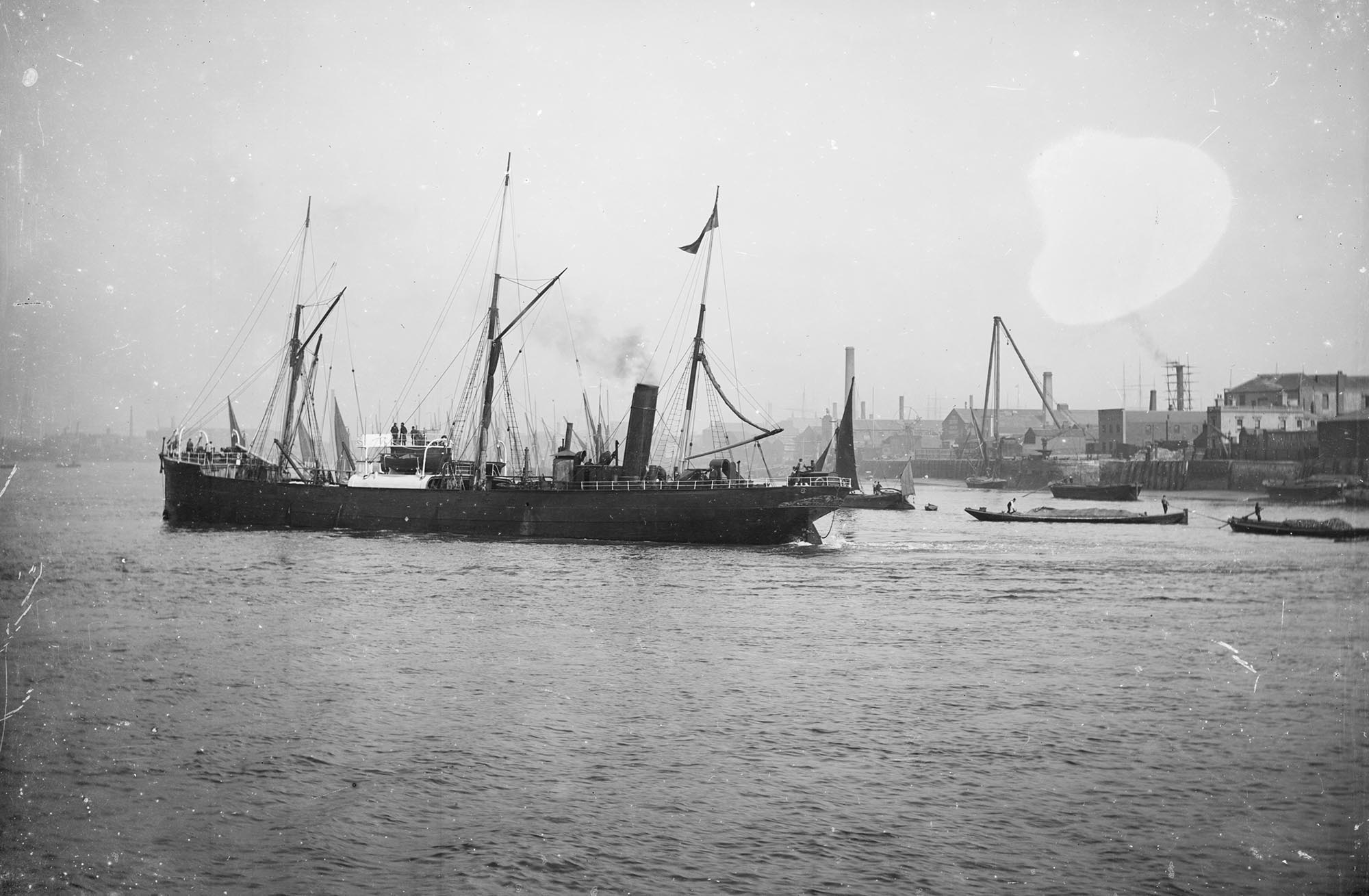The Perils of the Passenger
Before the coming of the railways, the sailing collier brigs provided a direct route between Newcastle-upon-Tyne and London. In the late 18th and early 19th centuries, it was quicker, cheaper, and easier to take ship, with colliers regularly leaving for London and other port towns in the south, than to endure the jolting journey of the stagecoach along the Great North Road.
For unescorted female passengers, the continuity of accommodation on board ship was preferable to a succession of overnight stays in unfamiliar towns. Passengers of all social classes and of both sexes set sail: gentry, clergy, 'the middling sort', military men, tradesmen, and working class people. A typical collier of 250 to 300 tons usually carried about three to five passengers, although as many as 36 could occasionally be accommodated.
An uncomfortable journey
In the days of sail it was possible with fair winds to make the passage south within a few days right up to the heart of London, where the colliers would unload their 'black diamonds' and their human cargo. The trade in 'King Coal' was so profitable that there was no need for a return cargo from London, although passengers also took ship there to return to the Tyne.
Nevertheless in adverse circumstances the voyage could be, at best, uncomfortable, and at worst, dangerous: the Tyneside artist Thomas Bewick remembered one such voyage in 1776 in his 'Memoir': 'beating about in good weather and bad' for three weeks. Collier-men's songs, which exist in numerous versions, list the natural hazards of sandbanks, cliffs and rocks.
One comprehensive version below shows the collier route standing well out to sea off Norfolk and Lincolnshire, passing the infamous Dudgeon Shoal, before closely hugging the north-eastern coasts, keeping land hazards in view:
First the Dudgeon, then the Spurn,
Flamborough Head is next in turn,
Filey Brigg is drawing nigh,
Scarboro' Castle stands on high,
Whitby Rock lies out to sea,
So steer two points more northerly,
Huntscliff Foot is very high land,
Twenty-five miles from Sunderland.
Hartlepool lies in the bight,
Seaham Harbour is now in sight.
The 'Old Man' says: "if the weather's right
We'll be in the Tyne tomorrow night".
Coal was despatched by sea up to and including the Second World War. The collier-men’s song refers to all the lights marking natural hazards along the way. The notorious Dudgeon Shoal was marked by a light vessel and between the Dudgeon Shoal and Newcastle the route hugged the coastline.
In the North Sea
The number of colliers criss-crossing the North Sea in both directions brought its own dangers: collision was unfortunately both inevitable and frequent, with tragic results. In 1809, the Jenny of South Shields was "run foul of" by the London Packet off Filey. Despite being the larger vessel, the Jenny foundered with the loss of all but two hands and all the passengers: "Mrs Hall . . . her son, a fine boy of 8 years of age, and her servant maid, having been on a visit to her friends at South Shields, were returning home on board the Jenny, and also unfortunately perished." ('Newcastle Courant', 26th August 1809, No.6,933, p4).
The menace of privateers
The heyday of the informal passenger service on board colliers also coincided with the Revolutionary and Napoleonic wars with France (1789-1815) although in practice there had been constant skirmishes, if not warfare, between the two nations since the 16th century.
Privateers, as their name implies, were private warships and were employed by both sides to harass, raid, and capture or "take" mercantile shipping: the importance of the coal trade made even little colliers fair game for the French.
Newspapers at the time reported ships being captured and then recaptured: "taken and "retaken". The Tyneside sailors usually mounted a determined defence of their ships, even when heavily outnumbered and outgunned, but their female passengers were not far behind.
In 1804, two "North Country" ladies were on board the Honduras Packet collier intercepted between Portsmouth and Sunderland by a French privateer, and sent for Dieppe. At Dieppe the two ladies assisted the crew, who were confined below, to prevent the ship coming to anchor.
As their captors hurried aloft to furl the sails to stop their vessel running aground, the women "persuaded and assisted the remaining crew to rise and retake the brig". As they turned for home, a "heavy gale" ensued, so that the vessel was wrecked at Dungeness, despite all their efforts.
The unnamed ladies wrote a spirited account of the event for the press, ending with the wreck: "In consequence of this last circumstance, each of us lost the whole of our cloaths (excepting what we had on) but have the greatest reason to thank Almighty God." ('Tyne Mercury', 20th November 1804, No.130, p3).
Extraordinary circumstances
Possibly the most extraordinary story involving female passengers aboard colliers was a tale of cat and mouse off the coast of Kent in 1747, when a French privateer, having taken an English collier a few days previously, and made her crew and passengers captive, was seeking her next victim.
The English ship Fanny looked a likely prospect, but her master, a man named Blakeley, was determined to avoid the same fate. He used his local knowledge to devastating effect after a chase of 11 hours, luring his pursuer onto the Goodwin Sands, where she stuck fast and was wrecked on the "Great Ship Swallower". Captain Blakeley generously went to the aid of the survivors from the wreck, and was astonished to find that he had rescued his own wife, who was among the captives from the collier.





